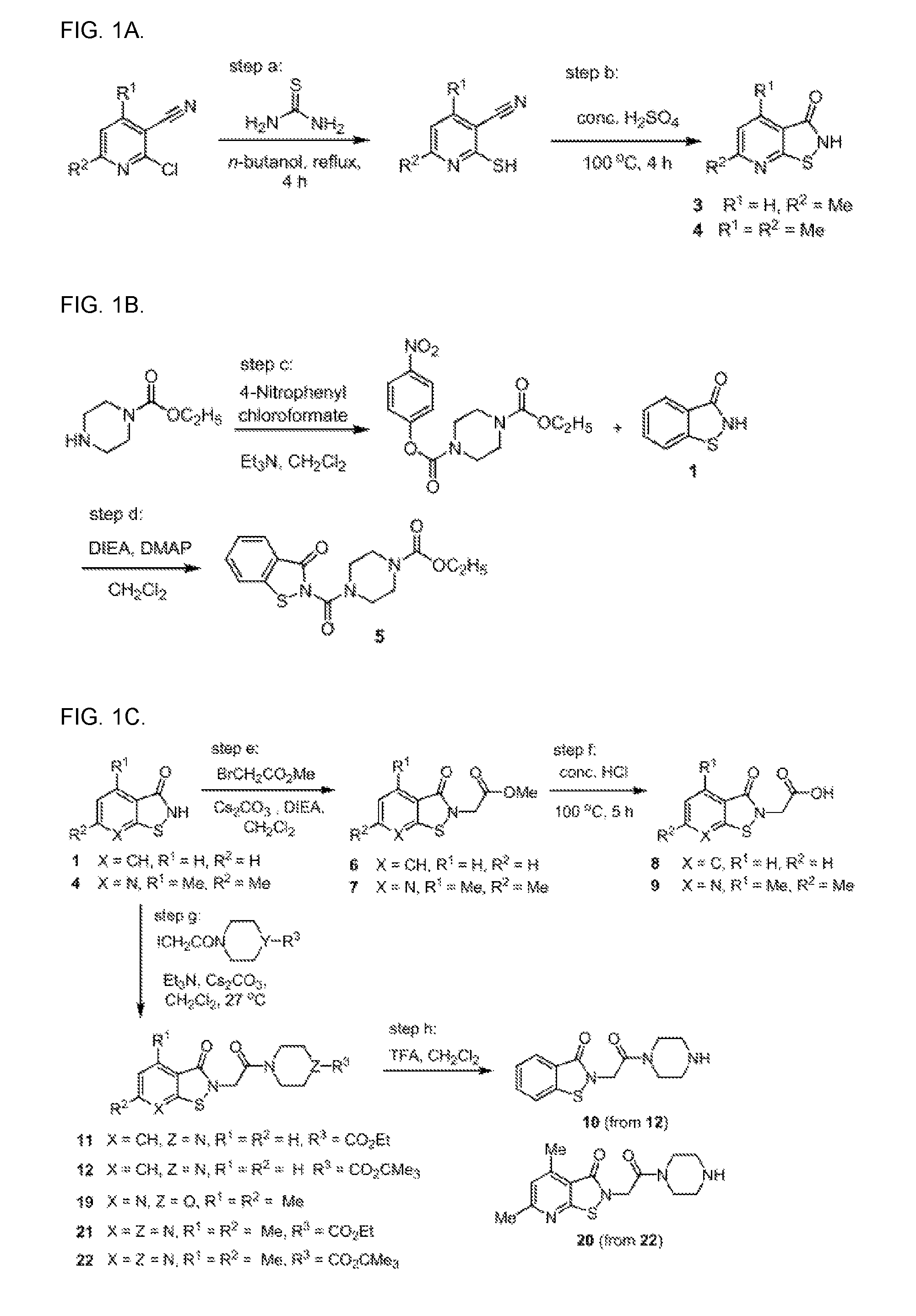Targeting human thymidylate kinase induces DNA repair toxicity in malignant tumor cells
a technology of thymidylate kinase and malignant tumor cells, which is applied in the direction of drug compositions, biocide, heterocyclic compound active ingredients, etc., can solve the problems of secondary cancer, unfavorable general cytotoxicity, and lack of differentiation between tumor- and rapidly-dividing cells in normal tissues
- Summary
- Abstract
- Description
- Claims
- Application Information
AI Technical Summary
Benefits of technology
Problems solved by technology
Method used
Image
Examples
example 1
TMPK is Important in Repair of Double-Stand Breaks by Preventing dUTP Incorporation
[0226]To assess the role of TMPK in DSBs repair, we depleted TMPK expression by siRNA interference and performed HR analysis in U2OS cells harboring DR-GFP reporter (Pierce et al., 1999). With I-Scel endonuclease expression, HR repair takes place to generate intact GFP, giving fluorescence readout. By flow cytometry analysis, TMPK knockdown significantly reduced the HR repair efficiency, monitored by GFP positive fraction (FIG. 2A). We also tested the effect of TMPK knockdown on repairing doxorubicin-induced DNA lesions in MDA-MB231 breast cancer cells. The control and TMPK knockdown cells were treated with low-dose (0.1 μM) of doxorubicin exposure for 4 h and then washed thoroughly with growth medium for refreshment. Initially, the extent of DNA lesions, as indicated by γH2AX foci staining (Mah et al., 2010), was similar in these cells (FIG. 2B). After recovery for 24 h, doxorubicin-induced DNA lesio...
example 2
RNR at DNA Damage-Site Requires Functional Coordination of TMPK for Repair
[0230]It has been estimated that dUTP / dTTP ratio in cells is in the range 0.3-3% (Traut, 1994). TMPK knockdown cells still retained more than 60% of dTTP pool and these cells proliferate (FIG. 7). Likely, cells contain other functional analogues of TMPK to compensate for this specific depletion. Presumably, the cellular level of dTTP is still much higher than dUTP in these cells. This invoked the question why knockdown of this specific TMPK causes dUTP incorporation in DNA repair.
[0231]To assess the functional requirement of TMPK in DNA repair, MDA-MB231 breast cancer cells were transfected with pEGFP-TMPK (D15R), a catalytic-dead mutant (FIG. 8). Of note, overexpression of TMPK (D15R) in HeLa cells with high transfection efficiency did not affect the total dTTP pool (FIG. 9). After doxorubicin exposure and recovery, we found that γH2AX foci diminished in non-transfected cells or cells overexpressing wild-type...
example 3
High Level of R2 Expression as a Determinant in Tumor Cells that Demand TMPK for DNA Repair
[0234]We further tested the requirement of TMPK for DNA repair in another breast cancer cell line, MCF-7, and non-tumorigenic cycling mammary cell line H184B5F5 / M10 and MCF10A. Similar to MDA-MB231 cells, TMPK knockdown caused doxorubicin-induced γH2AX foci persistent in MCF-7 cells. In contrast, DNA repair was unaffected by TMPK knockdown in H184B5F5 / M10 and MCF-10A (FIG. 10A). We compared expression levels of R2, p53R2, TMPK and dUTPase during recovery from DNA damage in MDA-MB231, MCF-7, H184B5F5 / M10, and MCF10A cells (FIG. 10B). Expression level of R2 subunit of RNR and dUTPase in MDA-MB231 and MCF-7 was much higher than those in H184B5F5 / M10 and MCF-10A cells. In MDA-MB231 cells, the R2 and dUTPase level was increased concomitantly between recovery 12 and 48 h post-doxorubicin exposure. Expression level of p53R2 is very low in MDA-MB231 because of functional deficiency of p53. In MCF-7, H...
PUM
| Property | Measurement | Unit |
|---|---|---|
| flow rate | aaaaa | aaaaa |
| temperature | aaaaa | aaaaa |
| final volume | aaaaa | aaaaa |
Abstract
Description
Claims
Application Information
 Login to View More
Login to View More - R&D
- Intellectual Property
- Life Sciences
- Materials
- Tech Scout
- Unparalleled Data Quality
- Higher Quality Content
- 60% Fewer Hallucinations
Browse by: Latest US Patents, China's latest patents, Technical Efficacy Thesaurus, Application Domain, Technology Topic, Popular Technical Reports.
© 2025 PatSnap. All rights reserved.Legal|Privacy policy|Modern Slavery Act Transparency Statement|Sitemap|About US| Contact US: help@patsnap.com



